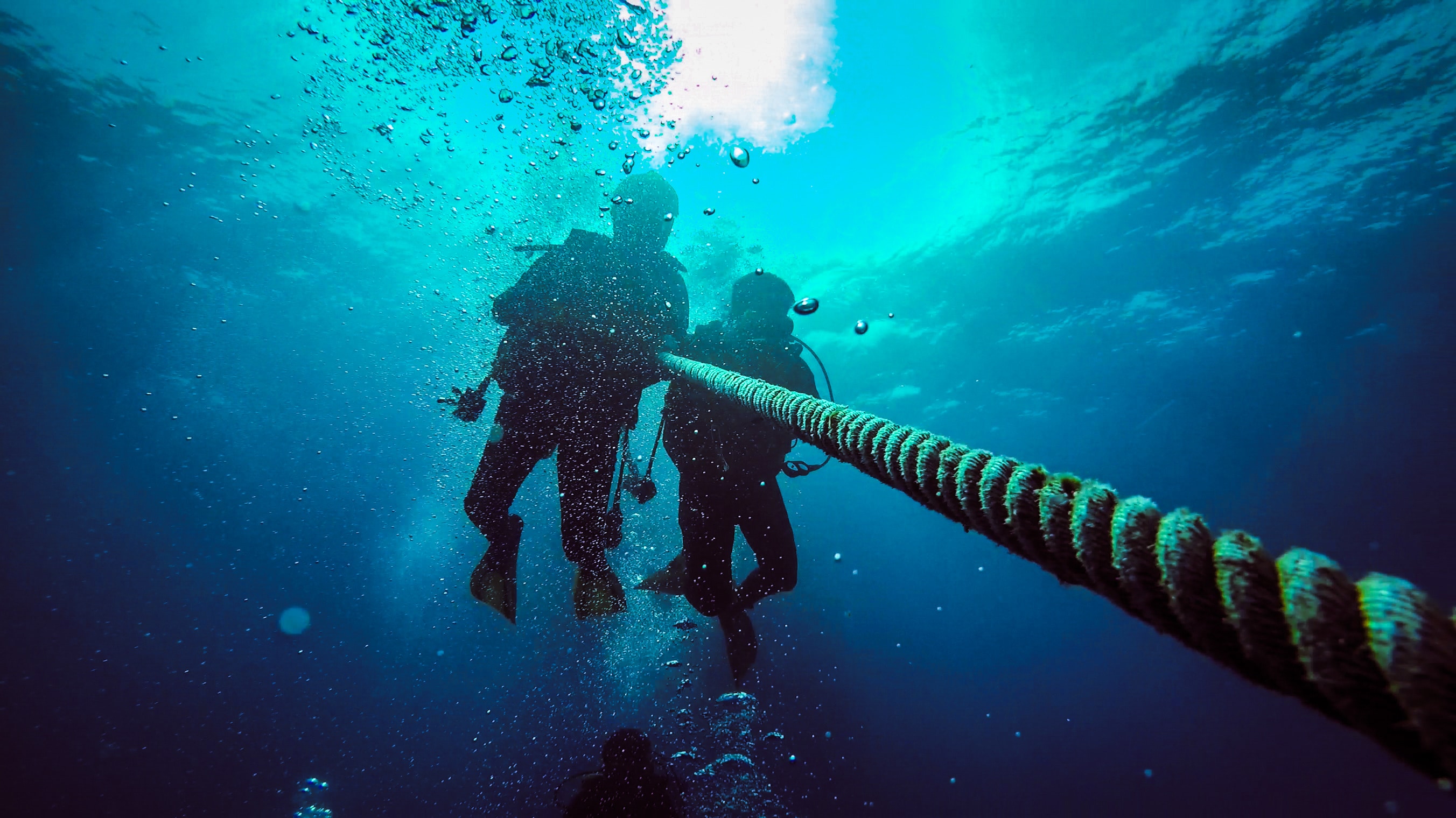#scuba What To Know When Diving Deep – DeeperBlue.com
[ad_1] One of the most frequent questions scuba divers are asked when talking to non-divers is “What’s the deepest you’ve gone?” This is eventually followed up by the question “What’s the deepest someones ever dove?”, and for that reason, I decided to write this post. At press time, Ahmed Gabr holds the deep dive record
[ad_1]
One of the most frequent questions scuba divers are asked when talking to non-divers is “What’s the deepest you’ve gone?”
This is eventually followed up by the question “What’s the deepest someones ever dove?”, and for that reason, I decided to write this post.
At press time, Ahmed Gabr holds the deep dive record at 332 Meters (1,090 feet).
Anytime you’re doing a deep dive, there are few things you’ll have to consider.
Deep Dive Limiting Factors
Decompression Sickness
One of the most limiting factors when diving deep are the risks of decompression sickness. As most divers know, the air we consume is composed of a percentage of oxygen and nitrogen. There are a few other gasses involved, but proportionally they are negligible.
As scuba divers go ascend, the nitrogen in our bloodstream expands due to the decrease in pressure. This can be extremely dangerous if not planned for. This can cause decompression sickness (aka the Bends).
In order to avoid this illness, divers must strategically stop at certain points of their dive for the nitrogen in their body to dissolve. Due to the technological advancements in the diving world, advanced dive computers help big time in avoiding this.
Deep dive world record holder Gabr decompressed for over 14 hours in order to reach the surface safely.
Running Out of Air
Another issue deep divers have to deal with is running out of oxygen. As you go deeper, gasses such as oxygen and nitrogen condense under pressure. This ultimately leads to divers consuming their air at a much faster rate.
On deeper recreational or tech dives, it’s extremely common for divers to bring extra tanks or pony bottles. If you’re planning to break the record for the deepest dive in the world, coming up with a plan on where to keep all your air is half the battle.
Gabr claims to have brought 9 different tanks with him for the dive!
Nitrogen Narcosis
Nitrogen narcosis is another thing that divers must keep in mind when going deep. The affliction causes divers to have an altered state of consciousness often compared with being drunk.
While not everything is known about the narcosis, it can be solved by ascending a few meters until the symptoms disappear.
If you plan on going fairly deep, narcosis and oxygen toxicity start to become huge factors that must be accounted for. In order to get around this, advanced divers will mess around with their air blends removing Nitrogen and Oxygen for Helium.
Tech Diving vs Recreational Diving
To those who don’t scuba dive often, the difference between tech and recreational diving can be confusing. Time to clear this up!
Recreational diving is considered to be any dive below 40 meters (130 feet) and is what a majority of scuba divers are familiar with.
You’ll start to enter tech diving territory when you extend past 40 meters. Here’s what changes with tech diving.
- Gear Choice
- Training/Certifications
- Risk
- Dive Sites
- Planning Procedure
Tech Diving Gear Choice
While some components of dive gear are shared between both types of diving, tech divers often carry a few extra gadgets. In addition to extra equipment, they often bring more specialized pieces of standard equipment.
Tech Diving Planning
Tech diving requires an extreme amount of planning in order to mitigate risk. This planning can be somewhat difficult, and also very time-consuming. Because of this, it’s no wonder PADI requires certain certifications for it.
Tech Diving Certifications
Besides the gear changes we mentioned above, tech diving also requires a variety of certifications. For more information on what certifications are required for tech diving, please check out the official PADI guide.
Risks of Tech Diving
Due to the nature of diving, the deeper you go, the higher the risk you run. All of the risk management you learn from your certifications will come into play.
Tech Diving Sites
As we stated earlier, tech diving allows you to reach greater depths. Obviously, this increases the number of dive sites you’re able to go to. Check out this post for more information on popular tech diving sites.
Conclusion
Overall, deep diving is an extremely dangerous process for even the most expert divers to take part in. To break the record, Gabr had to plan for years, not to mention his near 2 decades of dive instructor experience. Many lives have been claimed from deep diving.
In 2015, Guy Garman drowned while performing a world record dive. The exact place where he went wrong isn’t exactly clear but should serve as a warning that even the most experienced divers aren’t sage.
While it usually brings some pretty cool stories, you shouldn’t really dive deep for the sake of being deep. Sure, if a certain dive site awaits you at depth, then it’s important to come up with a diving structure and strategy to safely complete the dive.
We hope we cleared up some commonly asked questions about deep and tech diving!
Let’s block ads! (Why?)
[ad_2]
Source link








Comments